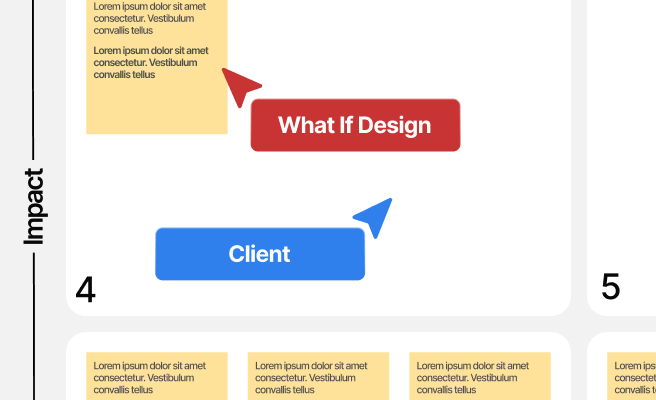User Demographics
<p>User demographics refer to the statistical characteristics of a population of users, including age, gender, location, income, education level, and more. Understanding these demographics is crucial for businesses and organizations as it helps tailor products, services, and marketing strategies to meet the specific needs and preferences of different user groups.</p>
<p>Historically, market research has relied heavily on user demographics to segment audiences and create targeted campaigns. In the digital age, with vast amounts of data available, businesses can gain deeper insights into their user base, allowing for more personalized and effective engagement.</p>
<h2>Importance of User Demographics</h2>
<p>Knowing your user demographics can significantly impact your business strategies. For instance, a business targeting young adults will adopt different marketing tactics compared to one targeting senior citizens. By understanding the demographics of their users, companies can:</p>
<ul>
<li>Optimize marketing efforts by targeting the right audience with the right message.</li>
<li>Enhance product development by creating products that meet the specific needs of their audience.</li>
<li>Improve user experience by designing interfaces that cater to the preferences and behaviors of different demographic groups.</li>
</ul>
<h3>Components of User Demographics</h3>
<p>User demographics typically include the following elements:</p>
<ul>
<li><strong>Age:</strong> Different age groups have varying preferences and behaviors. For example, younger users might prefer mobile apps, while older users might lean towards desktop experiences.</li>
<li><strong>Gender:</strong> Understanding gender distribution can help in creating gender-specific marketing campaigns and product features.</li>
<li><strong>Location:</strong> Geographic location can influence language, cultural preferences, and even purchasing power.</li>
<li><strong>Income:</strong> Income levels can affect purchasing decisions and product pricing strategies.</li>
<li><strong>Education Level:</strong> Education level can impact the complexity of language and information presented to users.</li>
<li><strong>Occupation:</strong> Knowing the occupation can help in tailoring products and services to fit the professional needs of users.</li>
</ul>
<h3>Use Cases</h3>
<p>Consider a climate tech company developing an app for farmers to monitor and reduce carbon emissions. By analyzing user demographics, the company can identify key factors such as the age range of the farmers, their educational background, and their geographic location. This information can guide the design of user-friendly interfaces and relevant features to ensure the app meets the specific needs of its target audience.</p>
<h2>Tools for Analyzing User Demographics</h2>
<p>Several tools can help businesses gather and analyze user demographics:</p>
<ul>
<li><a href="https://analytics.google.com" style="color: #2896FF; text-decoration: underline;">Google Analytics</a>: Provides detailed demographic data about website visitors, including age, gender, and location.</li>
<li><a href="https://www.surveymonkey.com" style="color: #2896FF; text-decoration: underline;">SurveyMonkey</a>: Allows businesses to create surveys to collect demographic information directly from users.</li>
<li><a href="https://www.hubspot.com/products/marketing/analytics" style="color: #2896FF; text-decoration: underline;">HubSpot</a>: Offers in-depth analytics and insights into user demographics and behavior.</li>
</ul>
<h2>Challenges and Opportunities</h2>
<p>While understanding user demographics offers numerous benefits, it also comes with challenges:</p>
<ul>
<li><strong>Data Privacy:</strong> Collecting demographic data must be done in compliance with data privacy regulations such as GDPR and CCPA. Users should be informed about how their data will be used, and consent should be obtained.</li>
<li><strong>Data Accuracy:</strong> Ensuring the accuracy of demographic data is crucial. Inaccurate data can lead to misguided strategies and poor decision-making.</li>
<li><strong>Segmentation Complexity:</strong> Over-segmentation can lead to excessively narrow target groups, making it difficult to scale marketing efforts effectively.</li>
</ul>
<p>Despite these challenges, the opportunities presented by understanding user demographics are immense. By leveraging accurate and comprehensive demographic data, businesses can create more personalized and impactful experiences, ultimately driving user engagement and satisfaction.</p>
<h2>Conclusion</h2>
<p>In conclusion, user demographics play a vital role in shaping business strategies, from marketing to product development and user experience design. By gaining insights into the statistical characteristics of their user base, companies can tailor their offerings to meet specific needs, enhance user satisfaction, and achieve greater success. For more information on improving your understanding of user demographics, <a href="https://www.forbes.com/sites/forbestechcouncil/2021/04/30/how-to-use-user-demographics-to-unlock-growth/" style="color: #2896FF; text-decoration: underline;">learn more about effective strategies here</a>.</p> <p>To understand the power of design across industries and sectors, view our diverse portfolio of works. <a href="https://www.whatifdesign.co/work" style="color:#2896FF; text-decoration:underline;">View our portfolio</a>.</p> <p>Increase user engagement that converts your demos into sales. Optimise your UX strategies with our audits.
<p>Fill out the <a href="https://tally.so/r/n97pxQ" style="color:#2896FF; text-decoration:underline;">UX Audit form</a> to get started. Ready to discuss your needs? <a href="https://cal.com/akhilak/what-if-design?duration=25" style="color:#2896FF; text-decoration:underline;">Book a consultation call</a> with us today.</p></p>

Let's scale your impact with great design.
Free consultation, no sales pitch
Thank you! Your submission has been received!
Oops! Something went wrong while submitting the form.
Let’s talk
Nothing great is built alone.
Let’s connect about your vision, our work and how we can collaborate.
Get in touch

